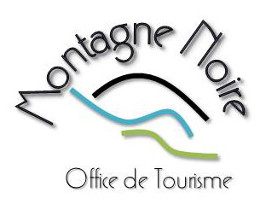A typical week for Martin and Céline, who love cultural visits in the Aude.
Here’s a typical program for a cultural stay in the Aude at Le Martinet Rouge campsite in Carcassonne. Great places to visit as a couple, with friends or family. Enjoy! Guided tour.

Sunday : Visit to the Paper Mill ( 900 m away)
A unique 45-minute adventure of discovery and magic!
Fun and interactive tour:
– around the history of paper and its manufacture,
– vintage machines (Dutch batteries, meuleton)
– hydraulic motors (bucket wheel, turbine).
– Demonstration of handmade paper.
Visit to the book village in Montolieu (10km away)
Montolieu welcomes over 52,000 visitors every year.
In Montolieu, you’ll find antique and second-hand bookshops, book and art craftsmen, a museum of the arts and crafts of the book, the Cérès Franco Cooperative Collection, graphic and plastic art exhibitions, a bibliophile collection, educational activities around the book route, sculptors, photographers, painters and a listed heritage site.
Monday: Limousis cave (25 km away)
Every year, the Grotte de Limousis welcomes some 27,000 visitors.
Although the cave has been occupied by prehistoric man and cave bears (scratches on the walls), it’s the numerous concretions that are best appreciated during the 45-minute guided tour.
Over a kilometer-long course, 5 rooms (Columns, Ball, Lac Vert, Disks, Grand Lac) and 2 lakes are waiting to be discovered. And the best is yet to come, with the 4-metre-high, 10-metre-circumference Aragonite Chandelier, the cave’s treasure.
Tuesday: Château de Lastours ( 23 km away)
Every summer, the Lastours site, accompanied by a historical re-enactment company, invites you to discover daily life in the 13th century through a complete immersion in medieval life.
Visitors will be able to watch demonstrations of medieval combat and crossbow shooting, as well as stroll through stalls showcasing various trades and activities, such as herbalism, weaving, blacksmithing and haubergeonerie (the creation of chainmail armor worn by the wealthiest warriors). The knights will showcase the weapons and protection customary in the 13th century.
Château de Saissac (9 km)
The least known of the “Cathar” castles – and yet! It’s the oldest and one of the largest, and a Carbon-14 analysis of a charcoal fragment embedded in the masonry of the keep gave the approximate date of 900 for the construction of this fortification.
According to an architect’s study, the château was built in three different periods.
After the Crusades, Saissac castle was rebuilt with the help of royal engineers.
Wednesday: Visit to the medieval city of Carcassonne (25 km away)
A key city in the formation of the national territory. A center of power for the Counts of Carcassonne and then the famous Trencavel family in the 12th century, it became a royal stronghold governed by a seneschal following the Albigensian Crusade (1209-1229), when royal forces seized Carcassonne, accused of complicity with the Cathars.
It guaranteed the border between France and Aragon until the Treaty of the Pyrenees in 1659.
Thursday: Visit to the village of Caune, its abbey and marble quarries (35 km away)
The village is home to an incredibly rich historical heritage, which can be discovered on two signposted routes through the village (map at the Tourist Office). As you wander through the medieval streets, you’ll discover the facades of private mansions dating from the 11th to 18th centuries.
As for the abbey, its true origins date back to the 6th century, when, according to legend, a shepherdess saw a spring gushing out at the foot of the cliff, and gave her sick child a drink from it, curing him immediately. Chapels were built on the Way of the Cross as a sign of gratitude, and became a place of pilgrimage.
According to documents found, the present chapel dates back to the 12th, 15th and 16th centuries, and the marble inside is quite impressive. Masses are celebrated daily at 11:30 am.
It’s also a great place for walks and pleasant picnics, with century-old plane trees, rivers and climbing cliffs. It’s also a starting point for hikes.
And don’t forget the marble sculptures in the village, inviting you to discover the quarries that have given Caunes Minervois an international reputation for its incarnate red marble. It was widely used under Louis XIV, notably at Versailles. But it can also be found at the Opéra Garnier… some quarries are still in operation and can be visited today.
Friday: Visit to the giant chasm at Cabrespine (35 km away)
Its dimensions are so exceptional that it is even referred to as a giant chasm. At 400 metres deep, it’s the largest converted chamber in the underground world! It could contain the Eiffel Tower. The chasm was only discovered in 1968, and opened to the public in 1988. During the 45-minute guided tour, you’ll appreciate not only the gigantic size of the cavity, but also its superb aragonite and calcite crystals . A new feature is a glass balcony with 200 metres of space beneath your feet!
Annual visitor numbers are 75,000.
Saturday: Visit to Pennautier castle (19 km away)
Château de Pennautier offers many activities such as tastings and tours of the cellars, wine and cheese workshops, wine and chocolate workshops, tours of the château (Monument Historique), the château is open to the public (every Wednesday in July and August, at 11 a.m. for a guided tour), tours of the vineyards (free guided tour through the vines), play areas and games for relaxation and discovery for young and old and free picnic areas and take-away baskets.
Like the Martin family, enjoy the cultural riches of the Aude.
Book your mobile home or gîte at a campsite near Carcassonne
Book your campsite in Cathar country
Enjoy your stay in the Aude near Carcassonne at Le Martinet Rouge campsite.




















